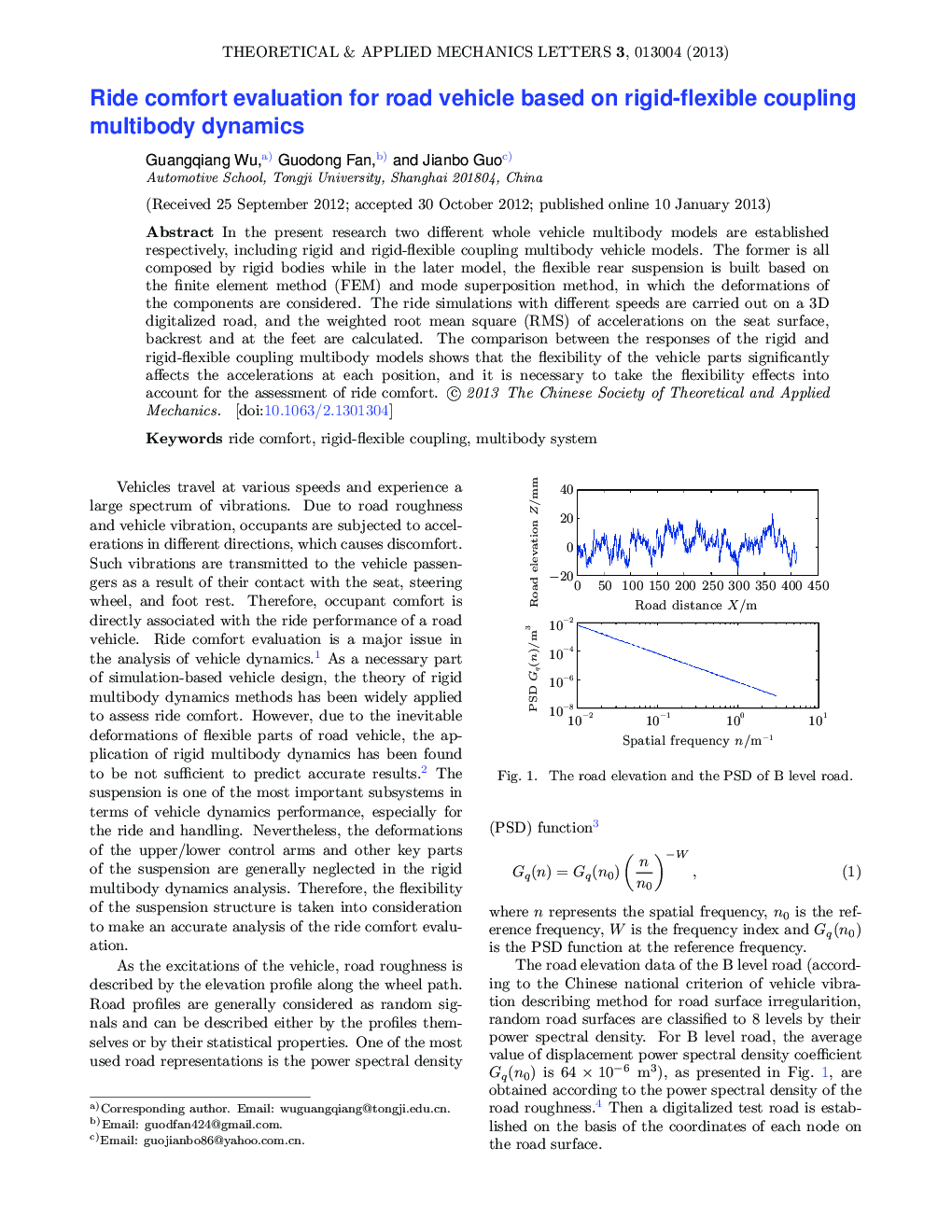| Article ID | Journal | Published Year | Pages | File Type |
|---|---|---|---|---|
| 808418 | Theoretical and Applied Mechanics Letters | 2013 | 10992 Pages |
In the present research two different whole vehicle multibody models are established respectively, including rigid and rigid-flexible coupling multibody vehicle models. The former is all composed by rigid bodies while in the later model, the flexible rear suspension is built based on the finite element method (FEM) and mode superposition method, in which the deformations of the components are considered. The ride simulations with different speeds are carried out on a 3D digitalized road, and the weighted root mean square (RMS) of accelerations on the seat surface, backrest and at the feet are calculated. The comparison between the responses of the rigid and rigid-flexible coupling multibody models shows that the flexibility of the vehicle parts significantly affects the accelerations at each position, and it is necessary to take the flexibility effects into account for the assessment of ride comfort.
